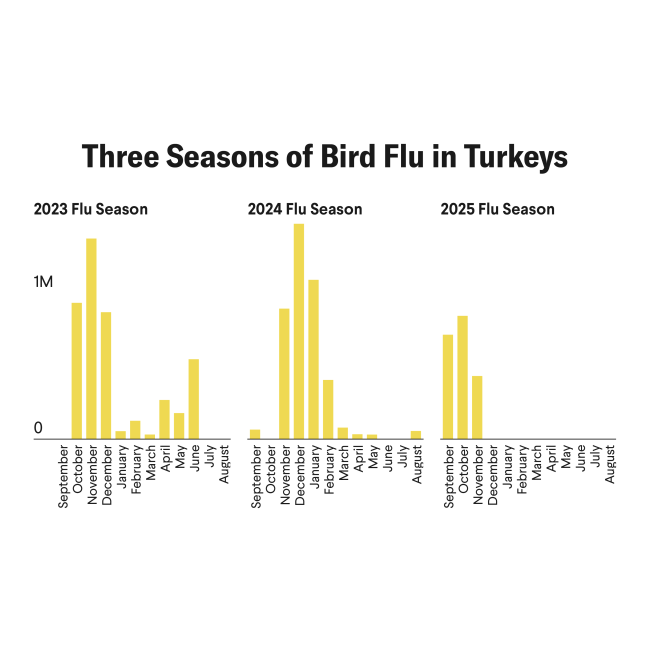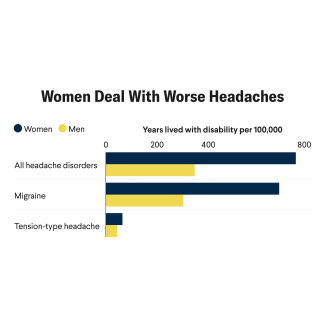Since the Green Revolution in the mid-twentieth century, the global food system has succeeded in boosting agricultural production, reducing acute and chronic malnutrition, and helping people escape poverty. These successes, however, are increasingly overshadowed by the health, environmental, and social threats that modern food systems create. Fortunately, momentum around the world is building to tackle those threats and produce another revolution in the global food system with local human and planetary health benefits.
Real Progress
The global food system has achieved the goals that the Green Revolution sought to catalyze—efficiently feed growing populations. Since the 1960s, agricultural yields have increased and food security has improved through more universal access to high-yielding seed varieties, chemical fertilizers, and controlled irrigation systems.
For example, from 1970 to 1995, rice and wheat yields in Asia doubled from 313 to 650 million tons per year, helping reduce poverty by half and increase calories consumed by the average Asian by 35%. During the same period, industrial farming practices across Europe and the United States produced large quantities of calorie-rich rice, wheat, and corn with increasing efficiency.

The efficiency gains in agricultural production meant that regular, large-scale, and catastrophic famines became an infrequent phenomenon. The proportion of people experiencing hunger fell from 14.7% to 10.6% between 2000 and 2015. The world also made enormous progress on malnutrition—the prevalence of child stunting dropped from 40% to 23% between 1990 and 2015.
Real Problems
Although progress on increasing agricultural yields and reducing malnutrition and poverty has been significant, the global food system is failing by other crucial standards. High-yielding, monocrop-centric food production generates negative externalities for human and environmental health, and lacks resilience mechanisms for adapting to climate change. As a result, the natural environment and human health are in jeopardy.
The planetary health impacts of the present global food system are catastrophic. Continued population growth produces an ever-increasing expansion of cultivated land. That expansion harms biodiversity, stresses global freshwater availability—of which food systems annually consume 70%—diminishes soil health, and triggers potentially irreversible environmental damage from the agricultural runoff of nitrogen and phosphorous. In addition, food systems emit between 25% and 30% of total global greenhouse gases annually.
Food systems emit between 25% and 30% of total global greenhouse gases annually
The harmful impacts on human health are also increasingly clear. The hyper-efficient global food system now struggles to deliver nutritious, healthy diets equitably. After a period of prolonged decline, hunger and malnutrition are rising around the world. The United Nations reports that more than 333 million people are acutely hungry—200 million more than before the COVID-19 pandemic. More than 150 million children are chronically malnourished and physically and often mentally underdeveloped for their age. Around 3 billion people suffer from micronutrient deficiencies. Approximately 2.5 billion adults are overweight, including 890 million living with obesity. Diet-related chronic diseases, such as cardiovascular disease and diabetes, are skyrocketing and stressing health-care systems, economies, and households around the world.
Earlier this year, the Food System Economics Commission estimated that the health, environmental, and social costs created by food systems collectively amount to $15 trillion per year. That amount is equivalent to 12% of global GDP in 2020 and is greater than the economic value that food systems generate.
Those unaccounted costs disproportionally affect low-income countries and communities. For such countries, the burden represents more than 25% of their annual GDP, relative to less than 12% in middle-income and 8% in high-income countries. The costs associated with poverty and undernourishment are also the most significant in low-income countries.
Real Acceptance
Although dysfunctional food systems continue to damage communities around the world, momentum is growing across the private sector, civil society, academia, and governments to tackle the root causes and consequences of broken global food systems. For example, the recent twenty-eighth Conference of the Parties (COP28) in Dubai was a watershed moment for raising global political recognition of food systems as a priority sector for climate mitigation and adaptation.
Such recognition reflects growing acceptance of the interdependencies between climate and food. The scientific community has established that climate change drives poor nutrition outcomes. Warming temperatures, erratic rainfall, and extreme weather patterns affect crop yields, reducing the availability and affordability of nutritious foods. Research indicates that poor nutrition likewise contributes to climate change. Food industry production and consumer consumption of less healthful foods—including refined grains, processed meats, and other ultra-processed foods—drives greater use of energy, arable land, and water while emitting more greenhouse gases. Arbiters of local, national, and global change should recognize that improving nutrition is necessary for achieving climate goals—and vice versa.

Real Solutions
Despite growing awareness about the global food systems' adverse impacts, evidence-based strategies and action should be accelerated to drive the world toward a healthy, sustainable, and resilient future.
To begin, governments should prioritize and implement data-driven policies and incentivize actions that produce benefits for human and environmental health. For example, food policies, such as mandatory food labels and food-based dietary guidelines, can help shift consumer demand and intake toward healthier and more sustainable diets.
Government subsidies can support agricultural practices that maintain or increase yields while reducing environmental load and improving availability and affordability of healthier foods. Farmers, both small- and large-scale, should receive financial incentives to use agriculture and food innovations that boost productivity, support biodiversity, reduce greenhouse gas emissions, improve soil health, and deliver nutritional value. Creating and fully funding robust social safety net programs that ensure access to affordable, nutritious, and sustainably produced foods will help households and communities bounce back in times of crisis.
The realities of national and local food systems require bundling policies and innovations in ways that best fit the needs of a given community, market, or country. Identifying what bundles make sense involves real-time research and data collection.
Evidence-based strategies and action should be accelerated to drive the world toward a healthy, sustainable, and resilient future
For example, at the national level, global monitoring schemes such as the Food Systems Countdown Initiative can help policymakers understand best practices and future opportunities for making progress on nutrition, sustainable livelihoods, and climate change. At the local level, quantitative, real-time impact measurement and management systems can drive investment into market-based solutions that improve environmental and human health. Both systems can also advance understanding potential synergies and trade-offs that could arise in transforming food systems.
The scale of the transformation needed requires the private sector to seize the business opportunities, and make the financial commitments, to operate farm to fork profitably yet sustainably in delivering nutritious food for all. Often perceived negatively by public health and environmental experts, private-sector enterprises can do well by doing good in leveraging their capabilities, resources, and scale to get a return on investment while driving equity and resilience in food systems. Achieving those audacious goals will not be possible without multisectoral dialogue, awareness-raising, and advocacy. The development of common metrics, measurement methodologies, and verification standards can accelerate trust and accountability across the private sector, civil society, and governments.
There is no universal recipe for improving food systems to secure the health of people and the planet. What seeds positive change for farmers in Iowa will differ from what delivers nutritious food to families in Kigali. Both communities are critical change agents.
What is clear is that the burdens of food systems should not exceed the benefits they produce. The time has come to stop using economic, political, and geographic differences as an excuse for failing to make the policy and financial investments necessary to align economic incentives, public policy, and multistakeholder actions in transforming food systems everywhere.

EDITOR'S NOTE: This article is the first installment in a series exploring global food systems guest-edited by Jack Bobo. The other articles in the series can be found here.












